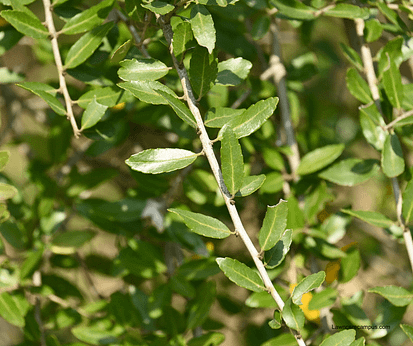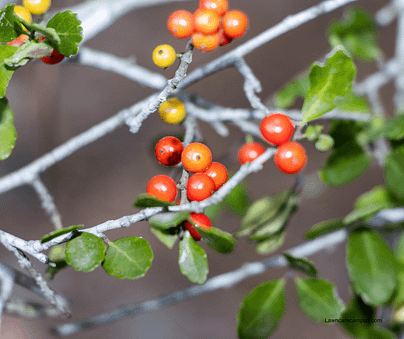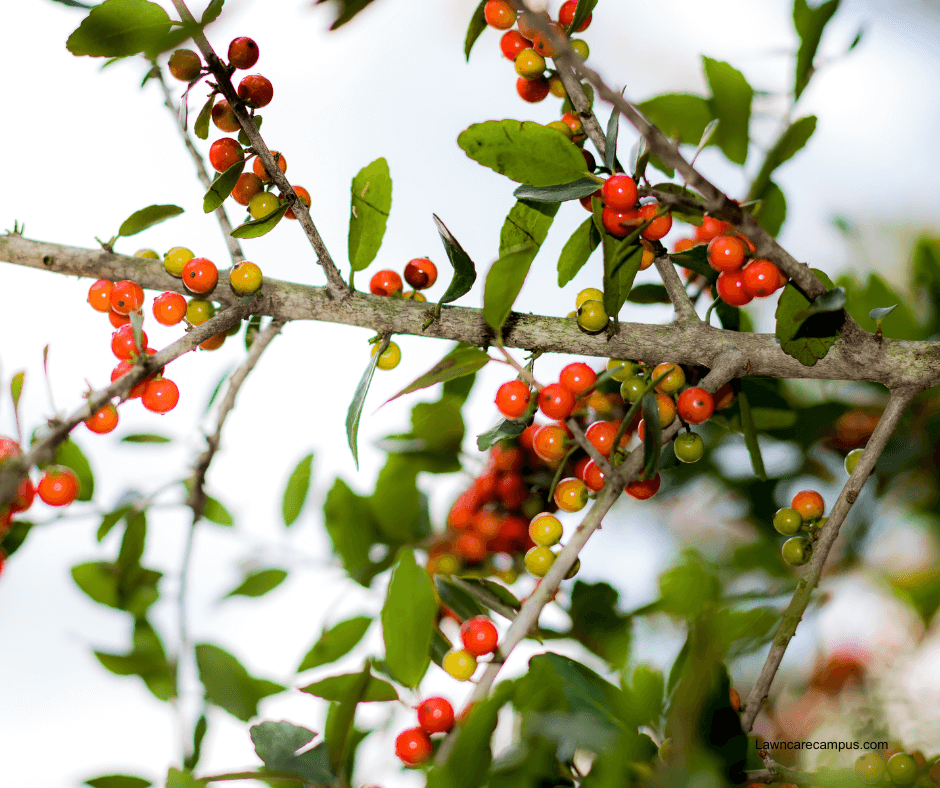Introduction to Yaupon Holly
Welcome to the fascinating world of *Yaupon Holly*, scientifically known as *Ilex vomitoria*! This charming evergreen shrub is not only a staple in southeastern landscapes but also a versatile addition to your lawn and garden. With its attractive foliage and striking red berries, it's no wonder that Yaupon Holly is a favorite among landscape professionals and amateur gardeners alike. But before you dive in, let’s explore some essential aspects of Yaupon Holly identification and care!
Just in case you're wondering why this plant's name sounds like it belongs in a fancy cocktail bar, let me assure you: it does have a connection to beverages! Traditionally used to make Yaupon tea, this native holly plant packs a punch with caffeine—yes, you heard that right! Talk about a refreshing herbal twist that might just become your new morning ritual.
Here are some key points you’ll want to consider when growing Yaupon Holly:
- Identifying Features: Look for its small, glossy leaves and bright red berries (which birds adore). You won’t miss the striking dark green foliage that lasts year-round!
- Pest Management: While generally hardy, keep an eye out for common pests like scale insects or aphids. Regular inspections can help prevent infestations.
- Disease Resilience: Yaupon is fairly resistant to diseases but can occasionally face issues with root rot if overwatered. Good drainage is key!
- Environmental Adaptability: This drought-tolerant shrub thrives in various soil types and can handle salt—perfect for coastal gardens.
As the famous author Ralph Waldo Emerson once said, “The creation of a thousand forests is in one acorn.” Similarly, the growth potential of your landscaping dreams could very well start with just one little Yaupon Holly plant! So let’s get our hands dirty and dig into the specifics of planting, pruning, and ensuring your garden flourishes with this spectacular species.
History of Yaupon Holly
The history of *Yaupon Holly* is as rich and colorful as the vibrant red berries it produces. Native to the southeastern United States, this evergreen shrub has been a significant part of indigenous cultures for centuries. Its scientific name, *Ilex vomitoria*, may raise eyebrows, but it stems from its historical use in ceremonial drinks. Indigenous tribes utilized the leaves to brew a caffeinated beverage, often consumed in rituals and gatherings—talk about an ancient energy drink!
The plant’s name itself reflects its cultural importance. “Yaupon” is derived from the Native American word used by the Timucua tribe, which means “to drink.” This connection is a reminder of how plants can serve not only aesthetic purposes but also pivotal roles in traditions and community bonding.
Here are a few fascinating historical points about Yaupon Holly:
- Cultural Significance: Used by Native Americans for centuries to create a stimulating beverage known as Yaupon tea, which contains caffeine—making it one of the few native caffeine sources in North America.
- Medicinal Uses: Beyond its refreshing qualities, Yaupon tea was believed to have purifying effects and was often used in various medicinal practices.
- Landscaping Evolution: Over time, Yaupon Holly transitioned into landscaping, valued for its ornamental qualities as well as its ability to attract wildlife.
Despite its hardy nature, Yaupon Holly isn’t invincible! It faces threats like pests (scale insects and aphids) and diseases such as root rot when overwatered. Thus, staying vigilant with pest control and ensuring good drainage are essential to maintaining this resilient shrub's health.
Pruning also plays a significant role in keeping your Yaupon Holly looking fabulous. A little snip here and there can promote bushiness and encourage that lovely berry production—a win-win for both aesthetics and wildlife! As with any green endeavor, understanding your plant’s history helps inform your care approach. In the words of landscape architect Frederick Law Olmsted:
“The enjoyment of scenery employs the mind without fatigue.”
So sit back, sip some Yaupon tea while enjoying your flourishing garden; after all, it all starts with understanding where our beloved plants come from!

Yaupon Holly Identification
Identifying *Yaupon Holly* can be a rewarding journey for any garden enthusiast! Not only does this charming shrub bring a vibrant touch to your landscape, but knowing its distinctive features will allow you to recognize it with ease. Let’s break down the essentials of Yaupon Holly identification and care so that you can confidently spot this evergreen gem in the wild or your backyard.
First and foremost, let’s talk about the leaves. The *Ilex vomitoria* boasts small, dark green leaves that are glossy and oval-shaped, typically measuring about 1 to 2 inches long. They often have a smooth edge but can occasionally be slightly serrated—like nature's way of keeping us on our toes! In spring and summer, you'll notice new growth sporting a fresh light green hue before transitioning to that robust dark green color we all adore.
During the fall and winter months, Yaupon Holly becomes an absolute showstopper with its bright red berries. These berries are not just eye candy; they provide food for birds and other wildlife, making it a favorite among those looking to attract feathered friends into their gardens. However, it's important to note that only female trees produce these vibrant berries—so if you're aiming for berry production, make sure you've got at least one male (which blossoms with small white flowers) nearby for pollination!
Here’s a quick checklist for identifying Yaupon Holly:
- Leaves: Small (1-2 inches), glossy dark green, oval-shaped.
- Berries: Bright red, produced primarily by female plants.
- Flowers: Small white blooms in spring on male plants.
- Growth Habit: Can be a shrub or small tree; typically maintains a compact form unless left unpruned.
The versatility of Yaupon Holly doesn’t end there! It can grow as either a shrub or be trained into a tree form, depending on how much you decide to prune. And speaking of pruning—proper maintenance is critical not only for aesthetics but also for the health of your plant. Regular trimming helps promote bushiness while removing any dead or diseased branches ensures healthy growth.
If pests come knocking at your green door (and they sometimes will), keep an eye out for scale insects and aphids. A blast from the garden hose or an insecticidal soap can help manage these pesky visitors without resorting to harsh chemicals.
In essence, understanding *Yaupon Holly identification and care* is all about recognizing its key features while being proactive in maintenance. With its stunning foliage and wildlife-friendly berries, this native holly plant is truly an asset to any landscape professional's repertoire!
Benefits of Growing Yaupon Holly
If you’re considering adding *Yaupon Holly* to your landscape, you're in for a treat! This hardy little shrub offers a plethora of benefits that go beyond just looking good in your garden. Let’s dig into some of the perks of growing this evergreen superstar that’ll make you say, “Where have you been all my life?”
Wildlife Friendly: One of the standout features of Yaupon Holly is its ability to attract birds and other wildlife. The bright red berries are not only a feast for the eyes but also a delicious treat for feathered friends! In fact, various species like cardinals, mockingbirds, and even robins flock to gardens featuring this shrub. So, if you're looking to create your own backyard sanctuary, Yaupon Holly is the way to go!
Drought Tolerance: As water becomes scarcer in many regions, having drought-tolerant plants like Yaupon Holly can be a game-changer. This native holly plant thrives in various soil types and can withstand dry spells once established. So go ahead and give Mother Nature a high-five while conserving water!
Year-Round Appeal: With their glossy leaves and vibrant berries during winter months, Yaupon Holly provides year-round visual interest. Think of it as nature's version of an all-time classic—always in style! According to the University of Florida’s Institute of Food and Agricultural Sciences (IFAS), “Yaupon Holly makes an excellent choice for use as hedges, screens, or specimen plants.” See? You’re not just planting; you’re curating art in your garden!
Caffeine Source: Move over coffee; there's a new kid on the block! Did you know that *Ilex vomitoria*, aka Yaupon Holly, has leaves packed with caffeine? Traditionally used to brew Yaupon tea by Native Americans, it offers an herbal alternative for those looking to spike their hydration routine with a little zing. Plus, who wouldn’t want to sip on a drink steeped in history? Just remember: moderation is key when enjoying those caffeinated leaves.
Low Maintenance Care: For those who might have had a *green thumb crisis* at one point (we've all been there), you’ll appreciate how low-maintenance Yaupon Holly can be. Once established, these beauties don’t require much fussing over—the occasional pruning here and there will keep them looking their best without demanding too much time or effort.
To sum it up: growing *Yaupon Holly* isn’t just about aesthetics; it’s about creating a thriving ecosystem right in your backyard while putting less strain on our planet's resources. As landscape professionals often say: “The best plants are the ones that give back.” And with its multitude of benefits—from attracting wildlife to being drought-tolerant—Yaupon Holly checks off every box on that list!
Planting and Growing Yaupon Holly
When it comes to planting and growing *Yaupon Holly*, getting started is as easy as pie—well, at least easier than making a pie from scratch! This evergreen shrub is not just a beautiful addition to your landscape; it's also pretty forgiving if you happen to make a few mistakes along the way. Here’s how you can ensure your *Ilex vomitoria* thrives in your garden like the superstar it is.
Location, Location, Location!
Yaupon Holly loves a good spot with plenty of sunlight, although it can tolerate partial shade. Aim for at least 4-6 hours of sun daily for optimal growth. You’ll want to plant it where it can truly shine—think of it as giving it its own stage!
Soil Requirements:
This little gem is not picky about soil type. Whether sandy, loamy, or clayey, Yaupon Holly will adapt nicely as long as it’s well-draining. Poor drainage? That’s like asking Yaupon to wear heavy boots in quicksand—no thanks! Consider mixing in organic matter like compost for added nutrients and improved drainage. According to the University of Florida IFAS Extension, “Proper soil drainage is vital in preventing root rot and ensuring healthy growth.”
Planting Tips:
When planting Yaupon Holly, dig a hole that’s twice the width and slightly deeper than the root ball. This gives those roots room to spread out and get comfy. Place the plant in the hole so that the top of the root ball is level with or slightly above ground level—remember: no roots want to be buried alive! Fill in around the roots with soil and water thoroughly.
Watering Wisely:
During the initial weeks after planting, keep an eye on moisture levels; Yaupon Holly likes consistent watering but doesn’t enjoy soggy shoes (roots). Once established, this shrub is quite drought-tolerant—perfect for those who sometimes forget about their plants (we see you!). Just remember that during extreme heat or drought spells, a little extra hydration won't hurt.
Pest Control:
Pests are part of gardening life; however, Yaupon Holly stands strong against most common enemies. Monitor for scale insects and aphids—these little guys can show up uninvited! If they do crash your party, consider using insecticidal soap or simply blast them away with water (who needs fancy pest control?). Regular inspections will help keep your Yaupon healthy and happy.
Pruning Practices:
If you've ever seen a wild shrub party without any boundaries, you know why pruning is essential! Prune Yaupon Holly during late winter before new growth begins to encourage bushiness and remove any dead or diseased branches. This not only keeps your shrub looking sharp but also promotes better air circulation—think of it as giving your plant a fresh haircut every once in a while!
With these tips up your sleeve, you'll be well on your way to cultivating stunning Yaupon Holly plants that will add flair to any landscape while attracting local wildlife. Remember: patience is key; even Mother Nature has her own timeline. As philosopher Ralph Waldo Emerson said,
“Nature always wears the colors of the spirit.”
So go ahead and let your garden thrive under your care!
Yaupon Holly Care & Maintenance
When it comes to *Yaupon Holly care and maintenance*, there are a few golden rules that’ll have your *Ilex vomitoria* feeling right at home in your garden! Whether you’re a seasoned pro or just starting out, learning the ins and outs of keeping this native holly plant healthy can save you a lot of headaches down the road. So grab your gardening gloves, and let’s dig in!
Pruning Yaupon Holly:
To keep your Yaupon Holly looking sharp and bushy, regular pruning is essential. Aim to prune during late winter, just before the new growth begins. This will encourage a neat shape and promote air circulation—think of it as giving your shrub a stylish trim! Here’s how to do it right:
- Use sharp, clean tools to make clean cuts.
- Remove any dead, diseased, or crossing branches.
- Don’t be afraid to cut back up to one-third of the plant if you want a more compact look.
Remember, a well-pruned plant is not just easier on the eyes; it also helps prevent disease by improving airflow.
Pest Management:
No one likes unexpected guests at their garden party—especially pests! While Yaupon Holly is generally resilient, it can occasionally attract unwelcome visitors like scale insects and aphids. Keep an eye out for these pesky bugs by regularly inspecting your plants. If you spot them, here are some eco-friendly ways to deal with them:
- A strong spray of water can dislodge pests without harmful chemicals.
- Insecticidal soaps or horticultural oils can target those stubborn critters effectively.
As Benjamin Franklin said,
"An ounce of prevention is worth a pound of cure."
And that goes for pests too—stay vigilant!
Disease Awareness:
Your Yaupon Holly might not be prone to many diseases, but root rot can become an issue if overwatered. To keep this from happening:
- Ensure well-drained soil—this is crucial!
- Avoid watering too frequently; let the top inch of soil dry out between watering sessions once established.
A good rule of thumb? If your plant seems unhappy (yellowing leaves), check its roots. Remember: happy roots mean a happy shrub!
Environmental Considerations:
This evergreen superstar loves sun but can tolerate partial shade too. However, if you want those stunning red berries (which attract wildlife like bees and birds), ensure it's getting at least 4-6 hours of sunlight daily. Also, be mindful of environmental factors like salt—Yaupon Holly is salt-tolerant, making it>The combination of these care techniques will create an environment where your Yaupon Holly thrives beautifully while enhancing the overall appeal of your landscape! As legendary gardener Martha Stewart wisely said,
"It's not what you look at that matters; it's what you see."
So take some time with your plants and enjoy all they have to offer!

Pests, Diseases, and Environmental Concerns
Maintaining a healthy Yaupon Holly isn’t just about watering and waiting; it’s also about being on the lookout for pests, diseases, and environmental factors that could potentially put a damper on your gardening dreams. But fear not! With a little vigilance and some proactive measures, you can keep your *Ilex vomitoria* thriving. Let’s dig into the details of pests, diseases, and how to navigate environmental concerns like a pro.
Pests
Despite its resilience, Yaupon Holly isn’t entirely immune to pests. The most common offenders include:
- Scale Insects: These little buggers can be tricky since they blend in with the plant. They suck sap from leaves, which can cause yellowing and weakening.
- Aphids: Tiny but mighty, these sap-sucking insects usually gather in clusters on new growth. They can lead to leaf distortion and even attract ants—talk about an unwelcome party!
To tackle these pests:
- Regularly inspect your plants for signs of infestation.
- A strong jet of water can often dislodge them without any chemical fuss.
- For larger infestations, consider using insecticidal soap or neem oil as effective treatments. Remember, the best defense is a solid offense!
Diseases
Yaupon Holly is generally robust but can fall victim to a couple of diseases if conditions are right (or wrong!).
- **Root Rot:** This sneaky disease creeps in when soil drainage is poor—think of it as an unwanted spa treatment for roots! To avoid this, ensure proper drainage by planting in well-draining soil and avoiding overwatering. If you notice yellowing leaves or mushy roots, it might be time to reassess your watering habits.
- **Leaf Spot:** Though less common, this fungal issue can occur due to excessive moisture on leaves. Keeping foliage dry by watering at the base helps prevent this problem before it starts.
Environmental Concerns
Your Yaupon Holly will thrive best under certain conditions. Here are some environmental aspects to consider:
- **Sunlight:** Aim for at least 4-6 hours of sun daily for optimal growth; think of it as their daily dose of sunshine therapy!
- **Soil Quality:** Well-draining soil is essential; nobody likes soggy roots! Consider mixing organic matter into sandy or clay soils to improve drainage and nutrient availability.
- **Salt Tolerance:** For coastal gardeners, rejoice! Yaupon Holly is salt-tolerant, making it perfect for seaside landscapes where other shrubs might falter under salty breezes.
"Gardening requires lots of water — most of it in the form of perspiration." — Lou Erickson
This quote rings especially true when considering environmental conditions; while you may sweat over caring for your plants, ensuring their happiness leads to thriving gardens filled with vibrant life! So stay proactive with pest control measures and environmental assessments while embracing the charm of your *Yaupon Holly*. With proper care and vigilance against pests and diseases, your landscape will flourish beautifully.
Uses of Yaupon Holly
The *Yaupon Holly* has an incredible range of uses that make it a star player in both ecological and practical aspects of landscaping. Let’s dig into some of the most notable applications for this versatile shrub, ensuring you understand just why your garden needs a little *Ilex vomitoria* magic!
1. Ornamental Beauty: One of the primary reasons people fall in love with Yaupon Holly is its striking visual appeal. With glossy, dark green leaves year-round, coupled with vibrant red berries in winter, this plant adds year-long interest to any landscape. It's like a fashionista of the plant world—never out of style! As noted by expert horticulturists, “Yaupon Holly is an excellent choice for hedges, screens, or specimen plants.” (University of Florida IFAS)
2. Wildlife Habitat: Yaupon Holly is a wildlife-friendly gem! The red berries serve as a feast for birds such as cardinals and robins during winter months when food is scarce. This shrub acts as a natural buffet and shelter for various species. Installing Yaupon Holly in your garden could transform it into a birdwatching paradise! Remember what John James Audubon said:
“Birds are not only beautiful but are also essential to our ecosystem.”
3. Cultural Significance: Historically, the leaves of Yaupon Holly were used by Native Americans to brew a caffeinated beverage known as Yaupon tea. This herbal drink not only offers hydration but also contains caffeine—a rare find among native plants! So next time someone talks about their new favorite tea, you can casually bring up your homebrew from Yaupon leaves and watch their eyes widen with surprise!
4. Erosion Control: If you're dealing with slopes or areas prone to soil erosion, planting Yaupon Holly can help stabilize the soil thanks to its extensive root system. This eco-service ensures that your garden remains intact while contributing to improved soil quality—talk about multitasking!
5. Hedge and Privacy Screens: When it comes to creating natural barriers or privacy screens, Yaupon Holly's dense growth habit makes it an ideal choice. It can be pruned into various shapes to fit your landscape design—or let it grow wild—either way; you'll have an attractive solution that keeps nosy neighbors at bay.
Cultural Significance: From Rituals to Modern Tea Drinking
The cultural significance of *Yaupon Holly* goes far beyond its aesthetic appeal—it’s steeped in history and tradition. From its ceremonial importance to modern-day uses, this evergreen shrub has woven itself into the fabric of various communities. Let’s take a delightful stroll through time and explore how *Ilex vomitoria* transitioned from ritualistic gatherings to becoming your new favorite tea!
The Roots of Ritual
For centuries, indigenous tribes across the southeastern United States held *Yaupon Holly* in high esteem. The leaves were brewed into a stimulating beverage known as Yaupon tea, used in social ceremonies and important rituals. This wasn't just a “sip-and-go” situation; it was an integral part of communal bonding! The Timucua tribe even named it “Yaupon,” which literally means “to drink.” Talk about being literal!
As noted by historian Dr. J.B. Jackson, “The plant served as a social lubricant, bringing people together for discussions and decisions.” It was regarded as more than just a beverage; it symbolized unity and strength among participants.
Modern-Day Steep
Fast forward to today, and you’ll find that Yaupon tea is enjoying a renaissance! As people seek healthier alternatives to traditional caffeinated beverages, this herbal concoction is making waves thanks to its caffeine content—yes, caffeinated holly leaves are the real deal! According to the USDA Agricultural Research Service’s Nutrient Database, Yaupon tea can contain up to 80 mg of caffeine per cup—just enough for that morning boost without the jitters!
Here are some interesting facts about Yaupon tea that highlight its value today:
- Rich in Antioxidants: Just like other herbal teas, Yaupon is packed with antioxidants that can help combat oxidative stress in the body.
- No Tannins: Unlike traditional teas that can leave a bitter aftertaste due to tannins, Yaupon offers a smooth flavor profile—perfect for those who prefer mild tastes!
- Cultural Revival: Many tea enthusiasts are rediscovering this ancient brew, resulting in growing interest among local farmers and suppliers.
In fact, some brands are now marketing Yaupon tea for its unique flavor and historical significance—who knew sipping on holly leaves could taste so good? It’s also become an eco-friendly option as it encourages native plant cultivation while supporting local agriculture.
Conclusion
With all these impressive attributes combined—cultural importance, environmental benefits, and wellness potential—it’s no wonder that *Yaupon Holly* continues to flourish both in gardens and teacups alike. So next time you’re sipping on a cup of Yaupon tea or admiring this gorgeous shrub in your landscape, remember: you’re not just indulging in something tasty; you’re partaking in age-old traditions that have stood the test of time! As Ralph Waldo Emerson once mused,
“The creation of a thousand forests is in one acorn.”
Your journey with *Ilex vomitoria* is just beginning—the possibilities are endless!


